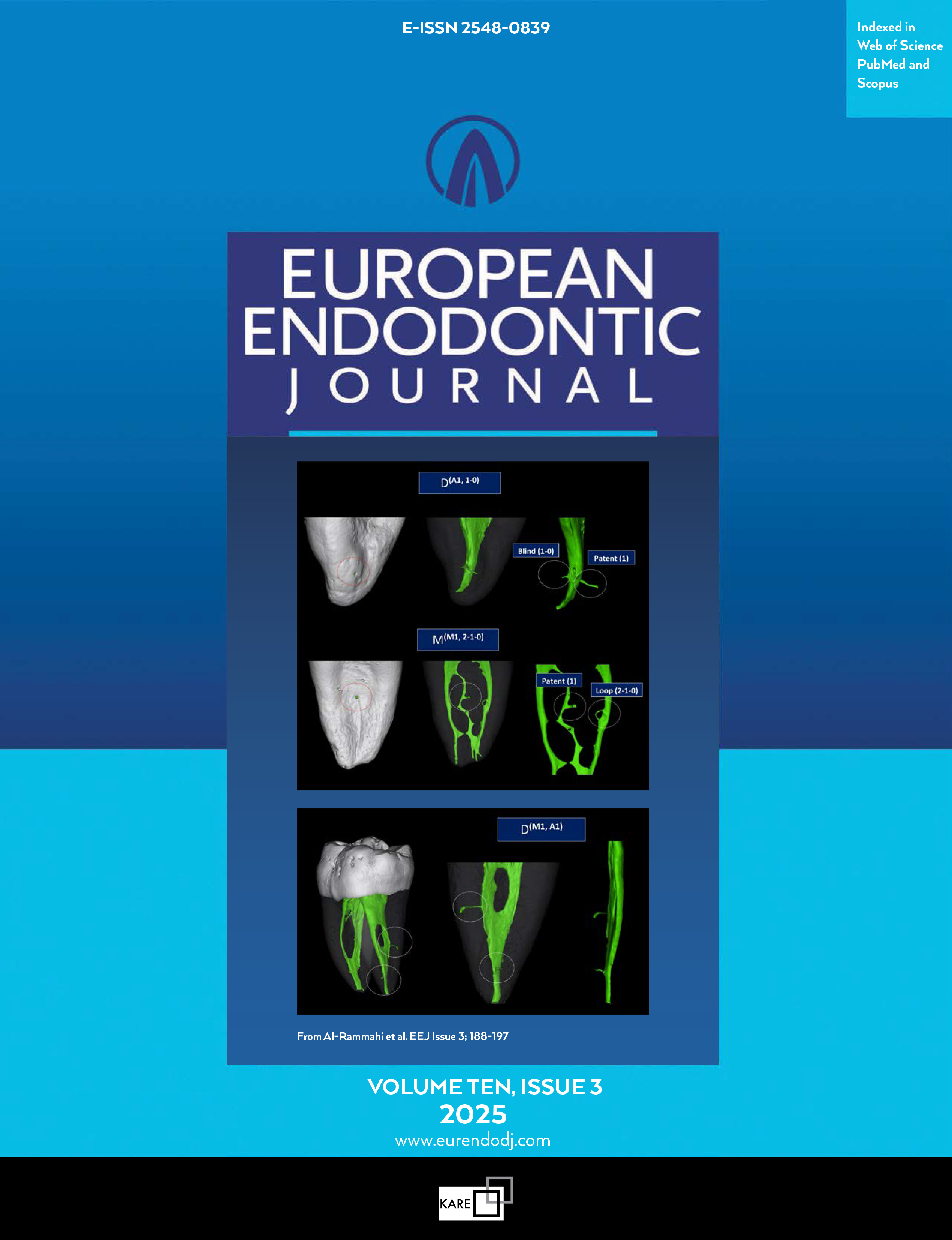Metrics
2024 IMPACT FACTOR
5 year Impact Factor
Eigenfactor Score
2024 CiteScore
Journal Citation Reports
(Clarivate 2025, JIF Rank)
Evaluating the Solubility of Endodontic Sealers in Response to Static and Dynamic Stress: An In Vitro Study
Mohammad Ali Saghiri1, Mahsa Amanabi2, Elham Samadi3, Armen Asatourian2, Fatereh Samadi4, Steven M. Morgano21Biomaterial and Prosthodontics Laboratory, Rutgers School of Dental Medicine, Newark, NJ, USA; Department of Restorative Dentistry, Rutgers School of Dental Medicine, Newark, NJ, USA; Department of Endodontics, University of the Pacific, Arthur A. Dugoni School of Dentistry, San Francisco, CA, USA2Department of Restorative Dentistry, Biomaterial and Prosthodontics Laboratory, Rutgers School of Dental Medicine, New Jersey, USA
3Sector of Angiogenesis Regenerative Medicine, Dr. Hajar Afsar Lajevardi Research Cluster (DHAL), New Jersey, USA
4Department of Restorative Dentistry, Biomaterial and Prosthodontics Laboratory, Rutgers School of Dental Medicine, New Jersey, USA; Sector of Angiogenesis Regenerative Medicine, Dr. Hajar Afsar Lajevardi Research Cluster (DHAL), New Jersey, USA
Objective: This study investigated the effect of static and dynamic conditions on the solubility of three en-dodontic sealers: AH Plus (an epoxy-resin-based sealer), Bio-C Sealer (a bioceramic sealer), and EndoSequence BC (a bioceramic sealer).
Methods: Plastic moulds were used to create 150 specimens, which were divided into three groups, with each group being filled with one of the three sealers. After the setting time, the specimens were removed from the moulds, dried, and weighed. Thirty specimens from each group were subdivided into three subgroups and stored in distilled water for 30, 60, or 90 days, while the remaining 20 specimens in each group were subdivid-ed into four subgroups and subjected to 0, 20, 50, or 100 thermocycling cycles. After storage time and thermo-cycling, the specimens were reweighed, and the weight loss and solubility percentage were calculated. The data were analysed using one-way ANOVA, Post Hoc Tukey, and Pearson correlation tests (p<0.05).
Results: The results showed that AH Plus had the lowest solubility, followed by EndoSequence BC and then Bio-C Sealer (p<0.0001). Both static and dynamic conditions had a negative effect on the solubility of all tested sealers, with the effect being more pronounced in bioceramic sealers. The increase in storage days and the number of thermocycling cycles were significantly correlated with the increasing solubility levels of all tested sealers (p<0.0001).
Conclusion: The increased solubility of endodontic sealers may have a negative impact on long-term treat-ment outcomes. Both static and dynamic conditions can affect the solubility of endodontic sealers.
Manuscript Language: English
(430 downloaded)


